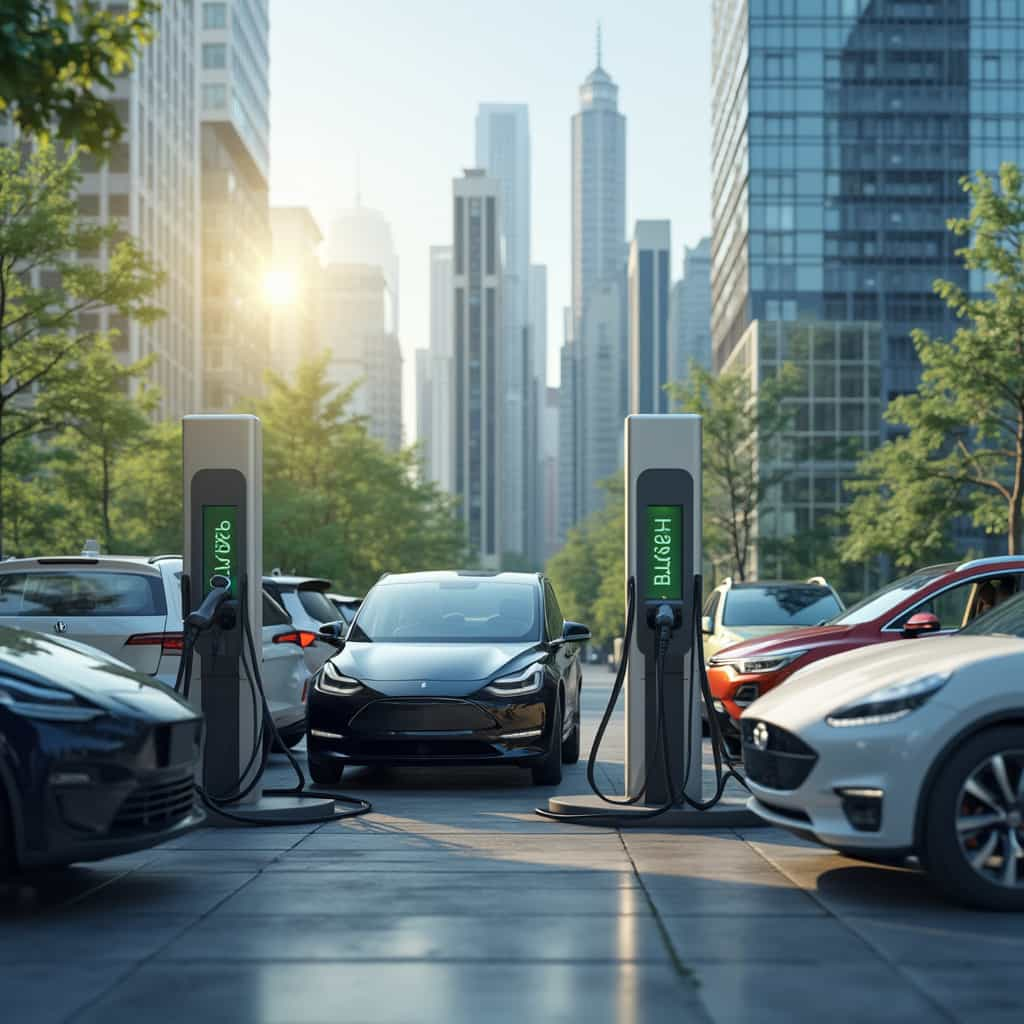The world is undergoing a transformative shift towards renewable energy, and at the heart of this green revolution is the electric vehicle (EV). As more consumers choose EVs over traditional gasoline-powered cars, the demand for EV charging stations has surged. These stations are pivotal in ensuring the convenience and feasibility of EVs, serving as fueling stations for the new age of transportation.
One of the key proposals for promoting green energy through EVs is the expansion of EV charging infrastructure. Governments around the world are investing heavily in this area, recognizing that a comprehensive network of charging stations is crucial for widespread EV adoption. In the United States, the Biden administration has pledged substantial funds to expand the EV charging infrastructure, setting a target of 500,000 public charging stations by 2030.
The costs associated with installing EV charging stations can vary significantly. Generally, there are three levels of charging: Level 1, Level 2, and DC Fast Charging. Level 1 uses a standard household outlet and is the least expensive to both install and use, but offers the slowest charging. Level 2 requires a 240-volt outlet, akin to that used for large home appliances, and provides a balanced charging speed with moderate installation costs.
DC Fast Charging stations, on the other hand, are the most expensive but offer rapid charging speeds. The installation costs for DC Fast Chargers can range from $15,000 to $50,000 per station, depending on location and infrastructure requirements. These chargers are ideal for commercial locations, highways, and urban centers where quick turnaround is essential.
Interestingly, the cost distribution can vary widely based on geographical areas. In densely populated urban regions, land and installation costs tend to be higher, pushing up the overall expenses for setting up charging stations. Conversely, rural areas may offer lower land costs but might require significant investment in grid infrastructure to support high-power charging stations.
In Europe, countries like Norway and the Netherlands have emerged as leaders in EV adoption, largely due to their extensive network of charging stations. Norway, for example, offers a robust public charging network largely powered by renewable energy sources, making it an economically and environmentally sustainable model.
For consumers and businesses looking to invest in EV charging stations, there are several factors to consider. Beyond the basic installation costs, ongoing operational expenses, such as electricity rates and maintenance, can also influence the overall cost-effectiveness of a station. It’s essential to calculate the total cost of ownership and consider potential incentives, such as government tax credits or subsidies, which can significantly offset initial investment costs.
Brands like Tesla have pioneered the development of Supercharger networks, offering a distinct competitive edge with high-speed charging exclusive to Tesla vehicles. However, the market is now seeing a surge in universal charging solutions, with companies like ChargePoint, EVgo, and Blink Charging leading the charge by offering diverse portfolios of charging products and subscription models.
ChargePoint, for example, operates one of the largest networks of independently owned EV charging stations in the world. Their subscription model allows for scalable solutions tailored to the needs of businesses and individuals, providing flexibility and economic efficiency. Meanwhile, Blink Charging focuses on offering a variety of hardware options, from single-family home units to commercial charging stations with advanced payment systems and network management.
To conclude, the adoption of green energy via widespread EV use hinges significantly on the accessibility and affordability of charging infrastructure. As technology advances and prices for equipment and installation decrease, the tipping point towards an electric future becomes ever more attainable. A strategic approach, aided by the understanding of specific regional opportunities and challenges, will be key to harnessing the full potential of electric mobility.
You may also like
Photovoltaic Panels and the Future of Green Energy
As the world pivots towards sustainable energy solutions, photovoltaic panels have emerged as a crucial player in the green revolution. This article delves into the intricacies of photovoltaic technology, evaluates their costs and benefits, and provides a comprehensive comparison of market offerings to help users make informed choices.
Wireless Internet Subscription Maze: Costs and Geographic Considerations
In an age where connectivity reigns supreme, wireless internet subscriptions offer an enticing solution for those seeking flexibility and coverage without the constraints of cables. This article delves into the complexities surrounding wireless internet options, detailing costs, proposals, and their respective advantages. By comparing various plans and assessing geographic cost variations, we aim to guide consumers towards making informed decisions in their quest for seamless connectivity.
Fiber Internet Subscriptions: Benefits and Options
Fiber internet has become a popular choice for consumers seeking fast and reliable internet connections. In this article, we explore various fiber internet subscription options, their costs, and advantages. We also compare different providers’ offerings to help consumers make informed decisions.
The Best Landline Phone Subscription: Offers and Costs
This article explores the intricacies of selecting a landline phone subscription, detailing various offers, costs, and benefits available in the market. It discusses the challenges and options associated with landline subscriptions, comparing multiple offers to help consumers choose the most cost-effective plan.
Private Phone Plan Subscriptions: Analysis of Costs, Options and Advantages
This article explores the intricacies of private phone plan subscriptions, detailing proposals, costs, and advantages. It compares multiple offerings, highlights potential issues, and provides geographical insights into the most cost-effective deals available.
